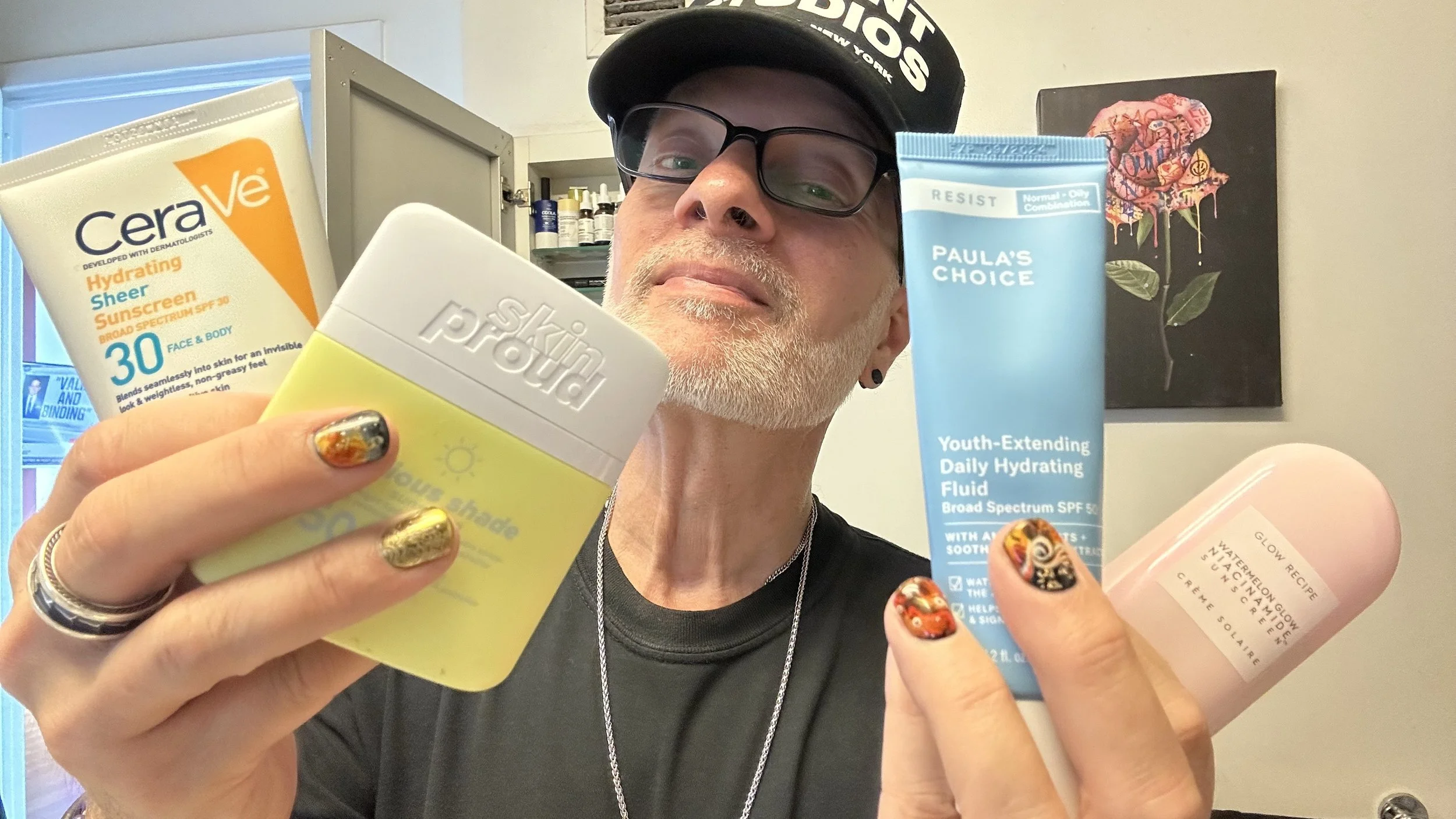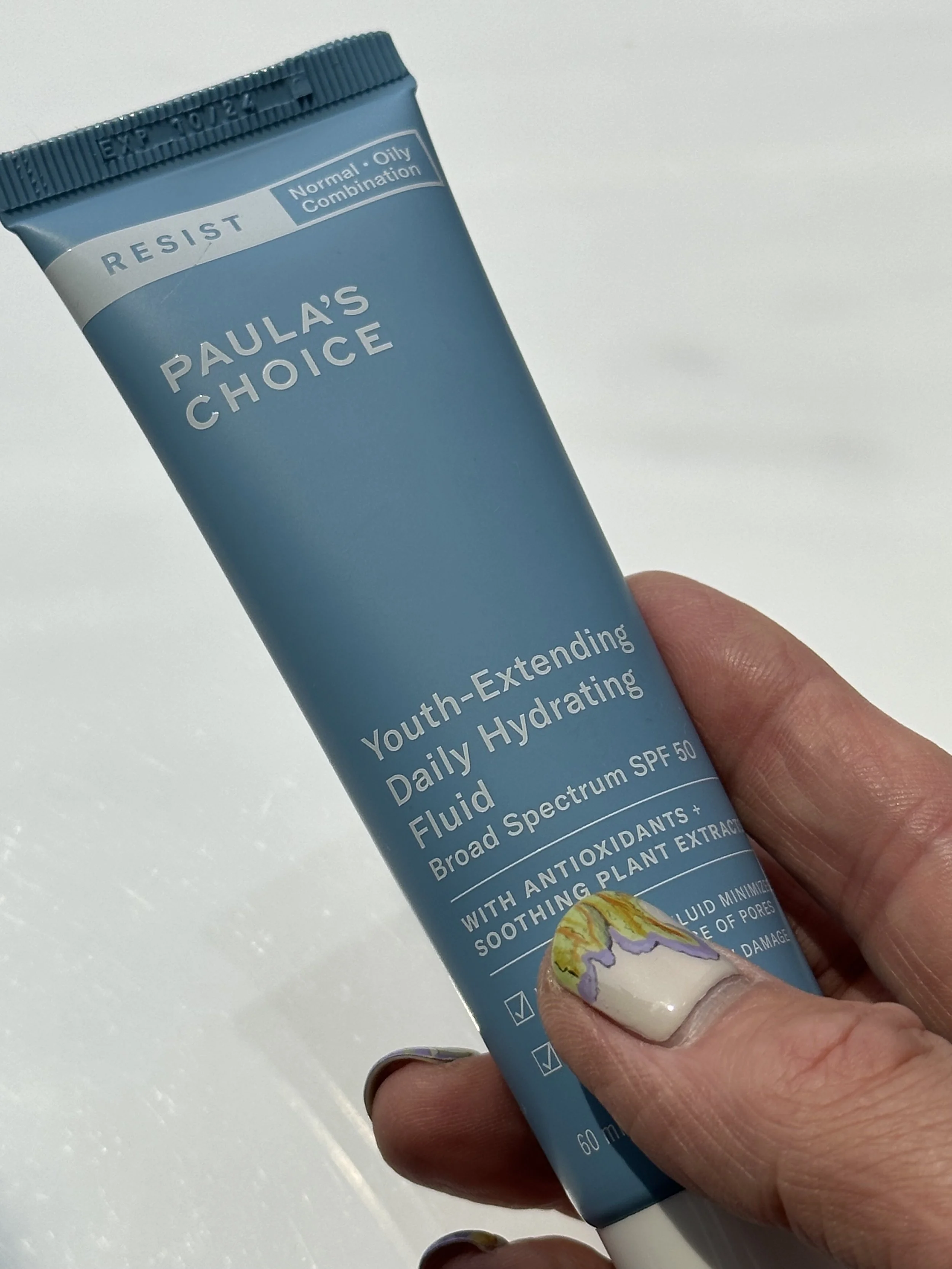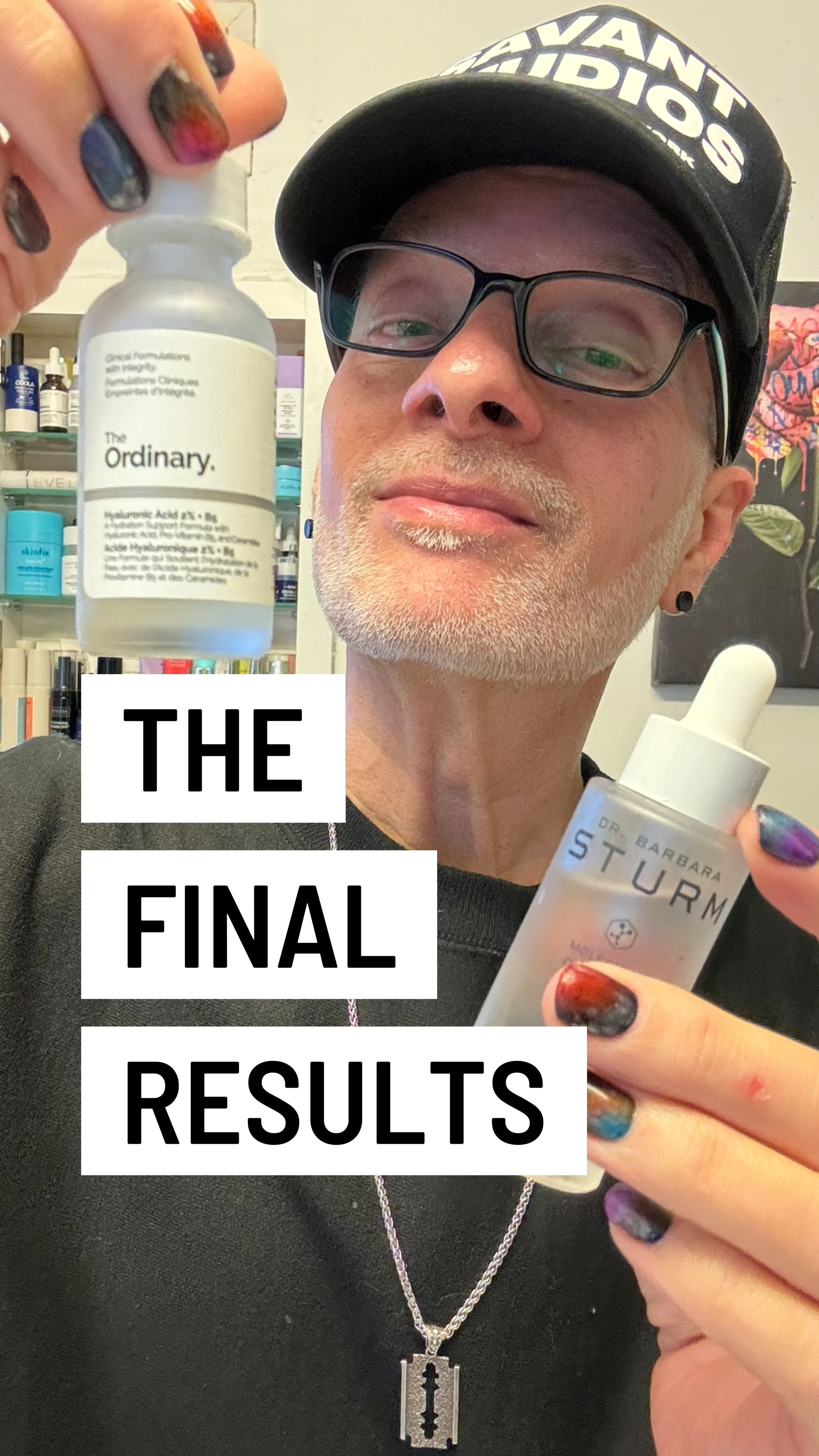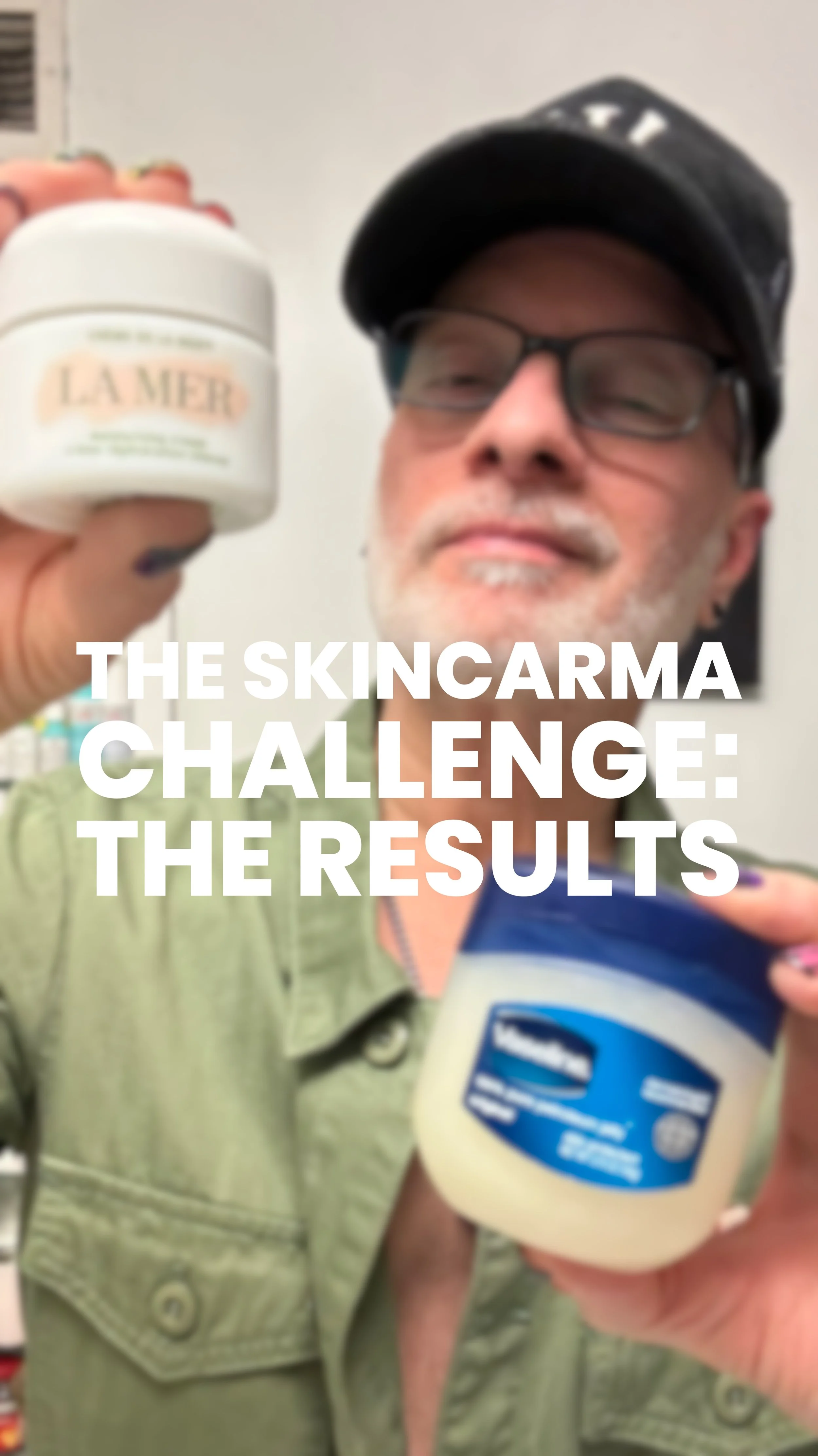PRODUCT REVIEW: PAULA'S CHOICE 5% VITAMIN C SHEER FACIAL MOISTURIZER SPF 50 - Can I use Vitamin C with sunscreen? How long after Vitamin C to apply sunscreen? Is Vitamin C ok for sensitive skin?
PAULA’S CHOICE 5% VITAMIN C SHEER FACIAL MOISTURIZER SPF 50
For some reason, summer is the season I fall in love with sunscreens. And it certainly isn’t because I only wear sunscreen when it’s sunny! As I’ve said many times before, I wear sunscreen even on “cloudy seemingly sunless days” – a mantra I picked up during my work at Kiehl’s.
The fact is I fall in love with sunscreens in the summer because that’s when brands introduce new ones.
Last year, my SPF infatuations included the Paula’s Choice Youth-Extending Daily Hydrating Fluid SPF 50 Sunscreen and CeraVe’s Hydrating Sheer Sunscreen SPF 30. Both of these ultra-lightweight milky fluids have been among my go-to sunscreens throughout the year. Catch my detailed product reviews of each on the blog in my top picks of the best sunscreens for face here.
While Paula’s Choice has long been my favorite skincare brand, it was hardly the brand I thought of for SPF – until the Youth-Extending Daily Hydrating Fluid. This season, the brand introduced two new lightweight sunscreens.
Under the Calm collection, the Paula’s Choice Barrier Protect Mineral Sunscreen SPF 30 was introduced two months ago. I love this light gel-cream with mineral UV filters! It’s infused with soothing actives to calm sensitivity and redness, too. Catch my review of it here.
Right on the heels of that launch, Paula's Choice introduced yet a third lightweight facial sunscreen – this one a moisturizer with SPF and an extension of the brand’s expanding Vitamin C collection. The new Paula's Choice 5% Vitamin C Sheer Facial Moisturizer SPF 50 is a brightening sunscreen formulated with synthetic UV filters, hydrators and antioxidants – including a 5% blend of Vitamin C molecules. My detailed review is just below.
BEST SUNSCREENS FOR FACE
There’s something noteworthy about discovering sunscreens you love in the summer. The truth is there’s no better time to put the texture of a skincare product to the test than on a hot, humid day. And that’s particularly important with a facial sunscreen since it’s the last product you apply as you start your day.
Do you know what the number one reason is that people give for not applying a sunscreen consistently? Texture! The wearability of a facial sunscreen – including how well it blends in on application and how it feels on your face throughout the day – is a deal breaker for most of us.
Personally, I have no love for tinted mineral sunscreens. They feel like sludge on my skin – and they dye my beard hair a gross yellowish beige orange color! No thanks.
Yet, while there has been little innovation in UV filters in the US for years, trusted brands like Paula’s Choice, Supergoop! and Elta MD have gotten really creative with SPF textures – much of it inspired by Korean and Japanese sunscreens. Who doesn’t love how those feel?!
When you find a facial sunscreen you love, you stick with it. Unless of course, your favorite brand keeps launching new ones you just gotta try…
SPF FOR SENSITIVE SKIN IS HERE! SEE IT IN ACTION FOR YOURSELF…
Before I get into my detailed Paula's Choice 5% Vitamin C Sheer Facial Moisturizer SPF 50 product review just below, I wanted to explore some of the most frequently asked questions about sunscreen and the Vitamin C technology behind the new Paula’s Choice brightening sunscreen for face.
1. Can I use Vitamin C with sunscreen?
Yes, you can use Vitamin C with sunscreen! In fact, the pair is an anti-aging powerhouse. By combining a potent antioxidant serum with a daily facial sunscreen in your morning skincare routine, you’re setting your skin up for optimal defense against environmental skin aging throughout your day.
A sunscreen alone is proven to help prevent most of the visible changes in the skin, notably signs of aging like wrinkles, darks spots, and loss of collagen. In fact, The Skin Cancer Foundation states that sun damage, also known as photodamage, is “responsible for 90 percent of visible changes to the skin.”
Ninety percent! The implication of that is that you can prevent, or at least significantly minimize, the majority of skin aging with a single, widely available product.
Vitamin C is a powerful natural antioxidant that helps neutralize the free radicals caused by pollution and UV exposure – something that your sunscreen does not do. When used together, a Vitamin C serum and a daily facial sunscreen are a powerful defensive duo against skin aging.
Explore my picks of the best sunscreens for face here and best Vitamin C serums here.
Sources: Wander Beauty: Why Vitamin C Should Be Paired With SPF; SkinCeuticals: The Benefits Of Using Vitamin C And SPF For Your Skin;
2. How long after Vitamin C to apply sunscreen?
A good rule is a minute – and even less. But precisely how long you should wait after applying a Vitamin C serum (or cream) before applying your sunscreen really depends on the texture of your Vitamin C product.
If you’re using a lightweight, water-based Vitamin C serum like the Paula’s Choice C15 Super Booster or the Drunk Elephant C-Firma Fresh Day Serum, you know the product is instantly absorbed by your skin. So there’s not much of a wait time.
I usually apply my Niacinamide and Vitamin C serums back-to-back then go do something like take the clothes out of the dryer or pet my cat before applying a face cream and/or sunscreen.
On the other hand, if you’re using a heavier Vitamin C serum formulated with plant oils, giving it a minute or so to be absorbed should be more than enough time. The Paula’s Choice 25% Vitamin C + Glutathione Clinical Serum, The INKEY List 15% Vitamin C & EGF Brightening Serum and Sunday Riley’s C.E.O. 15% Vitamin C Brightening Serum are great examples of heavier, oilier serums that need a bit more time to melt into skin.
Explore my picks of the best sunscreens for face here and best Vitamin C serums here.
Sources: Cosmopolitan: The Best Skincare Routine Order for Every Single Product You Own (Seriously); Well+Good: FYI: Layering This Product Under Sunscreen Can Boost Your Sun Protection
3. Is Vitamin C ok for sensitive skin?
Vitamin C may be ok for sensitive skin – and it may not. It depends on two things: how sensitive your skin is and the kind of Vitamin C you’re using.
If your skin is very sensitive, you should consider a Vitamin C serum or cream formulated with one of the following better-tolerated forms of Vitamin C:
Tetrahexyldecyl Ascorbate (THD)
Magnesium Ascorbyl Phosphate (MAP)
Sodium Ascorbyl Phosphate (SAP)
3-O Ethyl Ascorbic Acid
If your skin does well with harsher acids and actives or more potent skincare products like Glycolic Acid exfoliating toners, you’re likely fine with all forms of Vitamin C – including the most potent form: L-ascorbic acid, or pure Vitamin C.
Concentration matters as well. For sensitive skin, look for products with lower concentrations of Vitamin C in the 5% range. And, Vitamin C serums and creams formulated with soothing, moisturizing and hydrating actives will help to ameliorate any sensitivity or adverse effects. Ingredients like ceramides, Hyaluronic Acid, Allantoin and Bisabolol are superb skin soothers at active concentrations (look for them to be listed in the top 10!).
Explore my picks of the best sunscreens for face here and best Vitamin C serums here.
Sources: Vogue: How to Build Vitamin C Into Your Skincare Regimen; New York Magazine: The 13 Very Best Vitamin-C Serums - Including specific serums for dry, oily, and acne-prone skin.
4. Is mineral sunscreen really better than chemical?
Yes, in general, mineral sunscreen really is better than chemical sunscreen. That’s particularly true if you have sensitive skin. The mineral, or physical, UV filters Zinc Oxide and Titanium Dioxide tend to be better tolerated by skin that reacts to common chemical UV filters and other harsher actives. The pros of mineral sunscreen include:
Immediate protection: Because they remain on the skin’s surface, mineral sunscreens begin working immediately on application to prevent photodamage. Chemical sunscreens take time to absorb before they’re fully protective.
Gentle on skin: Mineral sunscreens are better tolerated by sensitive skin and eczema-prone skin as they are less likely to irritate or sensitize the skin than chemical ones.
Safety: Mineral sunscreens are recognized as more safe by the FDA because they do not penetrate the skin; this reduces concerns about entering the blood stream or affecting the body’s hormones.
Environmental impact: Mineral sunscreens are considered safer for marine life, as they are not contributors of coral bleaching as certain chemical UV filters are (e.g. Oxybenzone and Octinoxate).
Sensitive skin aside, however, what’s most important is not whether your sunscreen is mineral, chemical, or a hybrid of the two – but whether your facial sunscreen is a pleasure to use.
The majority of 100% mineral sunscreens do not have the most comfortable after-feel on the skin as mineral filters like Zinc Oxide work by remaining on the skin’s surface to deflect UV light away from the skin. Additionally, most true mineral sunscreens don’t blend well on darker, melanin-rich skin tones.
If you find a facial sunscreen you love, and it happens to be a chemical sunscreen, stick with it.
Explore my picks of the best sunscreens for face on the blog here.
Sources: Byrdie: Mineral vs Chemical Sunscreen: Which One You Should Use, According to Derms; The Cleveland Clinic: The Difference Between Mineral and Chemical Sunscreens
5. Product Review
It’s kind of wild to me that a brand that I wouldn’t even consider for sunscreen just a year ago has now become my go-to brand for the best facial sunscreens on the market. As I said above, Paula's Choice has really stepped it up over the past year, introducing three new sunscreens for the face. All of them are superb with really pleasing textures.
The latest of these is the Paula's Choice 5% Vitamin C Sheer Facial Moisturizer SPF 50 – a brightening moisturizer with SPF. If you’re familiar with the Paula’s Choice C5 Super Boost Moisturizer, then you’re probably thinking their new sunscreen is simply the same formula with SPF added to it.
That’s what I certainly expected. But we’d both be mistaken!
In fact, it’s far lighter than the brand’s Vitamin C face cream. The sunscreen product that I think it’s most like in terms of texture is the classic Biore UV Aqua Rich Watery Essence – the J-beauty icon. Both are slightly thicker than popular and more conventional ultra-lightweight sunscreen milks.
PRODUCT REVIEW: PAULA'S CHOICE YOUTH-EXTENDING DAILY HYDRATING FLUID SPF 50
Because the new 5% Vitamin C Sheer Facial Moisturizer SPF 50 is so light, it makes the ideal summer moisturizer with SPF. It literally feels like nothing on your face. And on a hot, humid July day, that’s exactly what I’m looking for when I’m waiting on the subway platform with no air conditioning. (The NYC subway is savage in the summer!)
Paula's Choice nailed the texture once again.
Last summer, the facial sunscreen I reached for most was the Paula’s Choice Youth-Extending Daily Hydrating Fluid SPF 50 Sunscreen. I often used it without applying a moisturizer first. That was especially ideal on my early morning bike rides when I knew I was going to sweat and just didn’t want layers and layers of skincare products on my face.
Instead, over the past month I’ve reached for this new one. It’s a blend of synthetic, or chemical, UV filters (Avobenzone, Octinoxate, Octisalate, and Octocrylene) and three Vitamin C molecules – Ethyl Ascorbic Acid, Ascorbyl Glucoside and Tetrahexyldecyl Ascorbate.
At a total concentration of five percent, that’s quite a significant amount of Vitamin C for a facial sunscreen. In fact, I’m hard-pressed to think of another one like it!
For antioxidant defense, Paula's Choice didn’t stop there. Additional antioxidants include Tocopherol (Vitamin E) and Acetyl Zingerone – a synthetic compound derived from ginger.
Acetyl Zingerone is an interesting substance as it’s believed to be exceptionally effective at neutralizing a wide range of free radicals, including reactive oxygen species (ROS) and “singlet oxygen,” which can damage skin cells and accelerate aging.
Of course, the most important characteristic of a facial sunscreen is texture, inclusive of blendability and after-feel. The Paula's Choice 5% Vitamin C Sheer Facial Moisturizer SPF 50 goes on somewhat opaque, which is deceptive. As you spread it over your skin, the slightly beige-orange hue dissipates and it blends in perfectly. It’s as sheer as the brand claims it to be.
If you’re looking for a combination facial moisturizer and sunscreen in one that delivers both UV and antioxidant defense, this could easily be your favorite sunscreen, too.
And that high concentration of Vitamin C is simply exceptional!
6. Pros & Cons
What I like about it: The Paula's Choice 5% Vitamin C Sheer Facial Moisturizer SPF 50 has a really pleasurable texture. Its lightweight moisture makes it ideal as a summer face cream with SPF. Plus, the addition of 5% Vitamin C makes it one of the most unique and best brightening sunscreens available.
What I don’t like about it: I love all of it; I wouldn’t change a thing!
Who it’s for: All skin types, even sensitive skin.
SHOP THE BLOG: Want to try it for yourself? Purchase the Paula's Choice 5% Vitamin C Sheer Facial Moisturizer SPF 50 for $45 here.
FIND OUT WHICH SERUM PERFORMED BETTER – AND BY HOW MUCH!
The Ingredient List of the Paula's Choice 5% Vitamin C Sheer Facial Moisturizer SPF 50:
Avobenzone, Octinoxate, Octisalate, Octocrylene, Aqua/Water/Eau, Glycerin, Silica, 3-O Ethyl Ascorbic Acid, Ascorbyl Glucoside, Dimethicone, Propanediol, Tetrahexyldecyl Ascorbate, Acetyl Zingerone, Acrylates/C10-30 Alkyl Acrylate Crosspolymer, Diethylhexyl Syringylidenemalonate, Dimethicone/Vinyl Dimethicone Crosspolymer, Porphyra Umbilicalis Extract, Hydrogenated Lecithin, Ricinus Communis (Castor) Seed Oil, Sodium Hydroxide, Tocopherol, Xanthan Gum, Ethylhexylglycerin, Laureth-4, Phenoxyethanol, Potassium Sorbate, Sodium Benzoate, Titanium Dioxide, Iron Oxides, Entada PhaseoloidesEthylhexylglycerin, Laureth-4, Phenoxyethanol, Potassium Sorbate, Sodium Benzoate, Titanium Dioxide, Iron Oxides, Entada Phaseoloides Bark/Seed Extract
IS IT REALLY A SCAM?
Find out on my TikTok channel.
WATCH MY VIDEO REVIEW
THE BEST NIACINAMIDE SERUMS FOR CLOGGED PORES AND A BRIGHTER COMPLEXION
ON MY YOUTUBE CHANNEL HERE
WATCH MY VIDEO REVIEW OF
SKINCARE HACKS: GLYCOLIC ACID IS THE NATURAL DEODORANT THAT WORKS!
ON MY YOUTUBE CHANNEL HERE
WATCH MY VIDEO REVIEW OF
MY FAVORITE HUMECTANT SERUMS FROM PAULA'S CHOICE, THE INKEY LIST, GHOST DEMOCRACY AND MORE
ON MY YOUTUBE CHANNEL HERE
WATCH MY VIDEO REVIEW
COOL CLEAN FACIAL SUNSCREENS TO KEEP US SAFE AND SMILING IN THE SUN!
ON MY YOUTUBE CHANNEL HERE
WATCH MY VIDEO REVIEW
THE OPULUS BEAUTY LABS RETINOL SYSTEM – THE COOLEST RETINOL INNOVATION I’VE EVER SEEN
ON MY YOUTUBE CHANNEL HERE
WATCH MY VIDEO REVIEW OF
MY WINTER SKIN SAVIOR: SKINFIX BARRIER+ LIPID REPLENISHING SKINCARE
ON MY YOUTUBE CHANNEL HERE
WATCH MY VIDEO REVIEW
A COMPLETE K-BEAUTY ROUTINE WITH THE BEST FACIAL SKINCARE FROM PURITO, COSRX, MISSHA & MORE!
ON MY YOUTUBE CHANNEL HERE
WATCH MY VIDEO REVIEW
THE YEAR’S BEST VITAMIN C SERUMS WITH PAULA'S CHOICE, SUNDAY RILEY, THE INKEY LIST AND MORE!
ON MY YOUTUBE CHANNEL HERE
WATCH MY VIDEO REVIEW OF
A SELFCARE SUNDAY NOT FOR THE FAINT OF HEART – WITH THE PAULA’S CHOICE 25% AHA PEEL!
ON MY YOUTUBE CHANNEL HERE




















